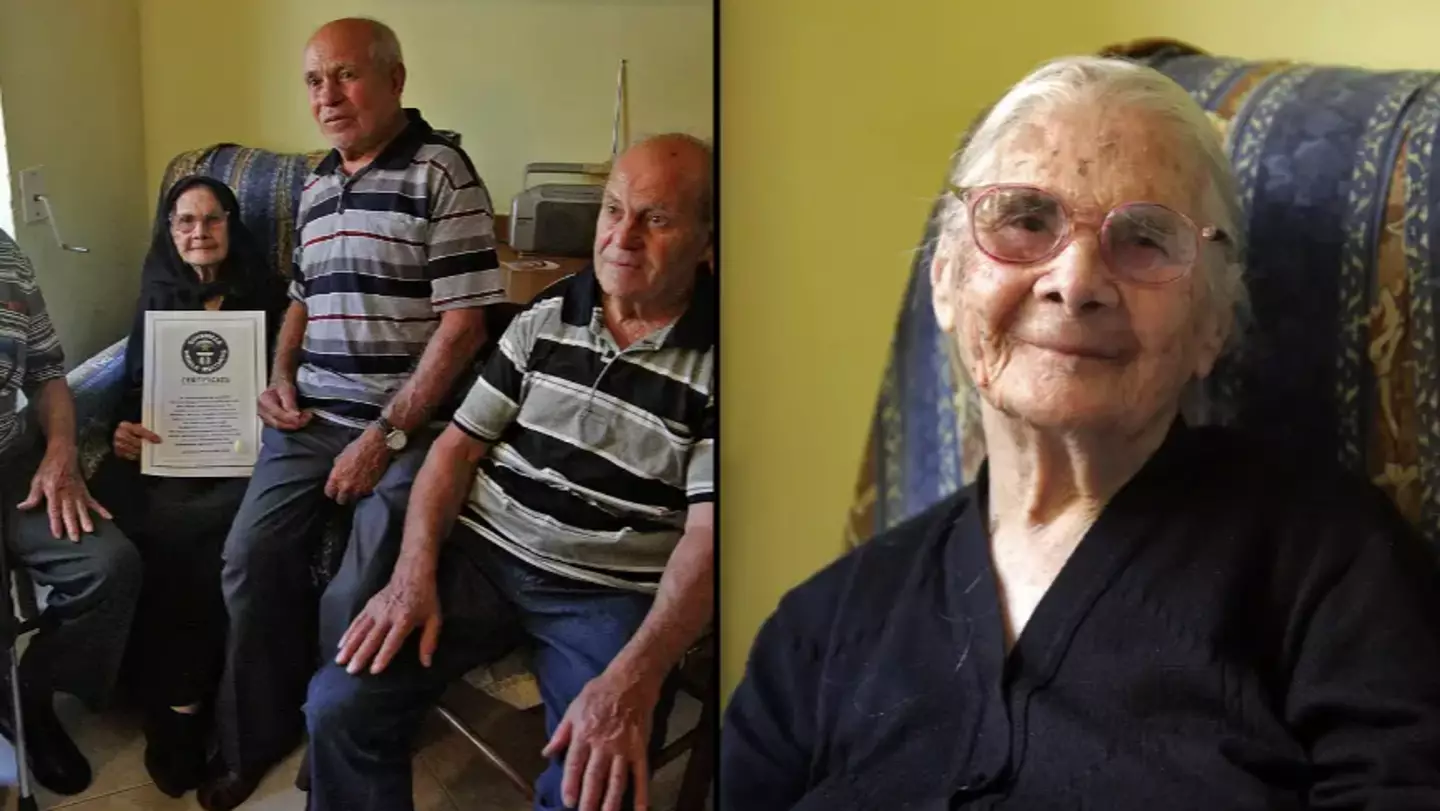
The oldest family in the world ate the same meal for their entire life and even experts swear by it.
Forget eating out at new restaurants, whipping up crazy recipes or trying to expand your palette, the Melis family from Italy apparently found the secret to a long and healthy life – and it’s all down to this one meal.
Who are the Melis family?
The nine siblings were known as the world’s longest-lived family, and in 2012 they were given the Guinness World Record for the highest combined age of 818 years.
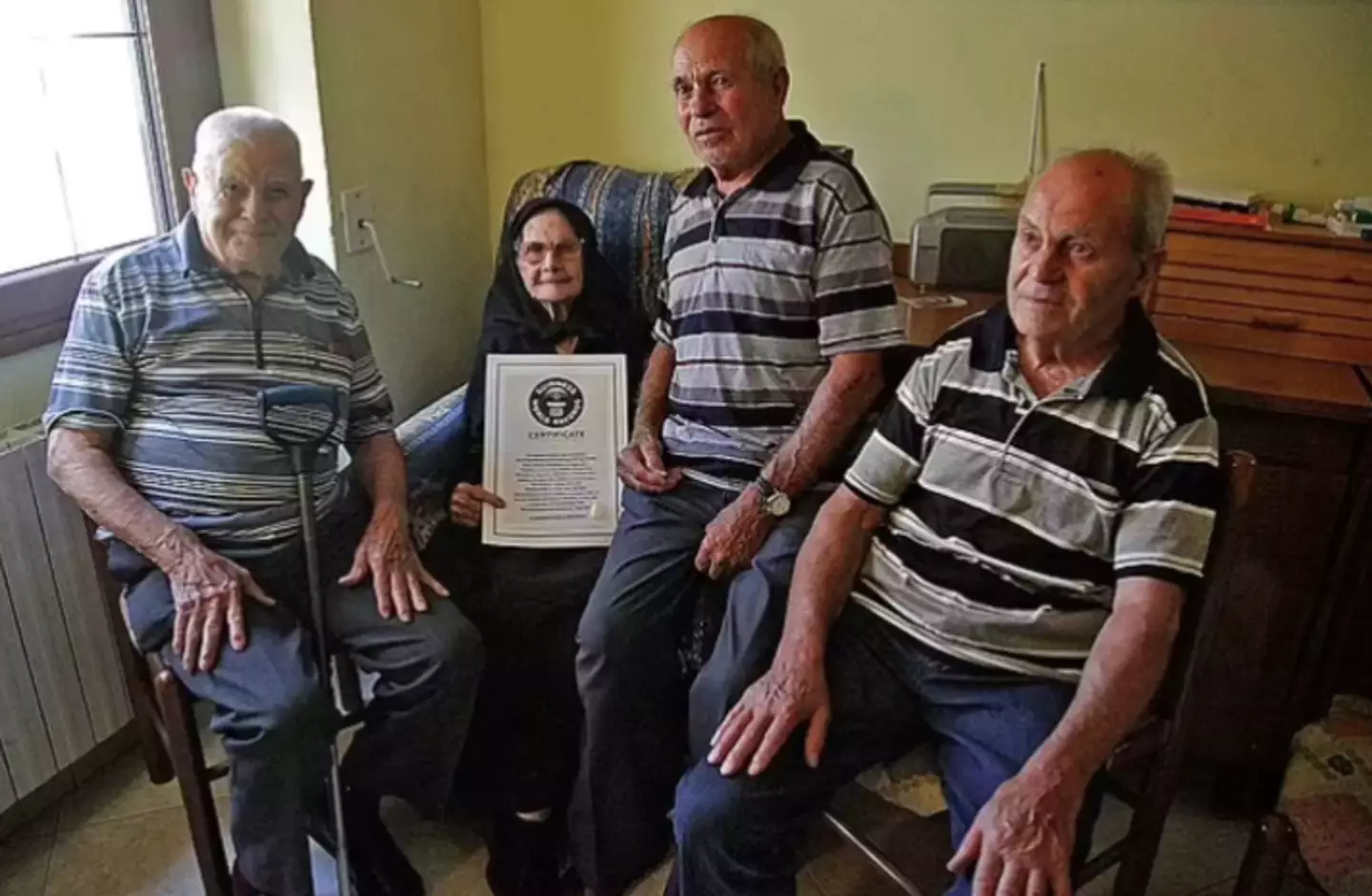
The Melis family received widespread attention in 2012 (AFP/Getty)
In 2023, the Melis siblings featured in the Netflix documentary series Live to 100: Secrets of the Blue Zones.
The show followed American author Dan Buettner visit five ‘blue zone’ areas of the world, which included Sardinia in Italy, where the Melis family lived.
A blue zone is an area of the world where people are claimed to live longer than average and Sardinia is one of the most well-known.
Buettner, an expert in tips to extend your life through healthy means, shone a light on the Melis family lunch that they ate every day.
What’s the meal?
So what’s the meal the Melis family munched on each day? You may want to reconsider your lunchtime options.
It is plant-based and contains foods full of vitamins. Explaining the meal, Buettner said: “Every day of their life they had the same meal for their lunch.
“A sourdough bread, a three bean minestrone soup – a chunky minestrone with garden vegetables.
“It always had three beans; a garbanzo, a pinto and a white bean.
“And then they had a small glass of red wine. I’m talking a two to three ounce glass.
“Now this wasn’t because ‘my diet requires me to do it’.
“No, they loved it.”
Samantha Cassetty Cassetty, a New York City dietitian, told Today.com: “People who live the longest, healthiest lives tend to eat half a cup to a cup of beans daily.
“It’s also noteworthy that the soup uses three types of beans and multiple vegetables.
“Research suggests that eating 30 unique plant foods per week can improve your gut diversity, a marker of a healthy gut.
“Your gut regulates health functions, like blood pressure and cholesterol, inflammation, mood, weight and nutrient absorption, so you’ll be more likely to live a longer and healthier life if you have a healthy gut.”

This is why the soup is so good for you (Westend61/Getty)
Why was the Melis soup recipe so healthy?
The pinto beans are packed full of nutrients, protein and fibre with zero cholesterol to be seen. Garbanzo beans are the same.
White beans are known as a ‘nutrional powerhouse’ according to Healthline, as they’re packed with fibre and protein and are a good source of micronutrients including folate, magnesium, and vitamin B6.
Where are the Melis family now?
In more recent years, members of the Melis family have passed away. Consolata Melis died in 2015 aged 108 and was her town’s longest-surviving citizen, The Guardian reported in 2021. She was the eldest in the family of nine. Her sister, Claudina, died in 2016 aged 103, and Maria died at 100 and Antonio died aged 97.
Featured Image Credit: ETTORE LOI/AFP/Getty Images/ETTORE LOI/AFP/Getty Images
Topics: Food And Drink, Health, World News, Community
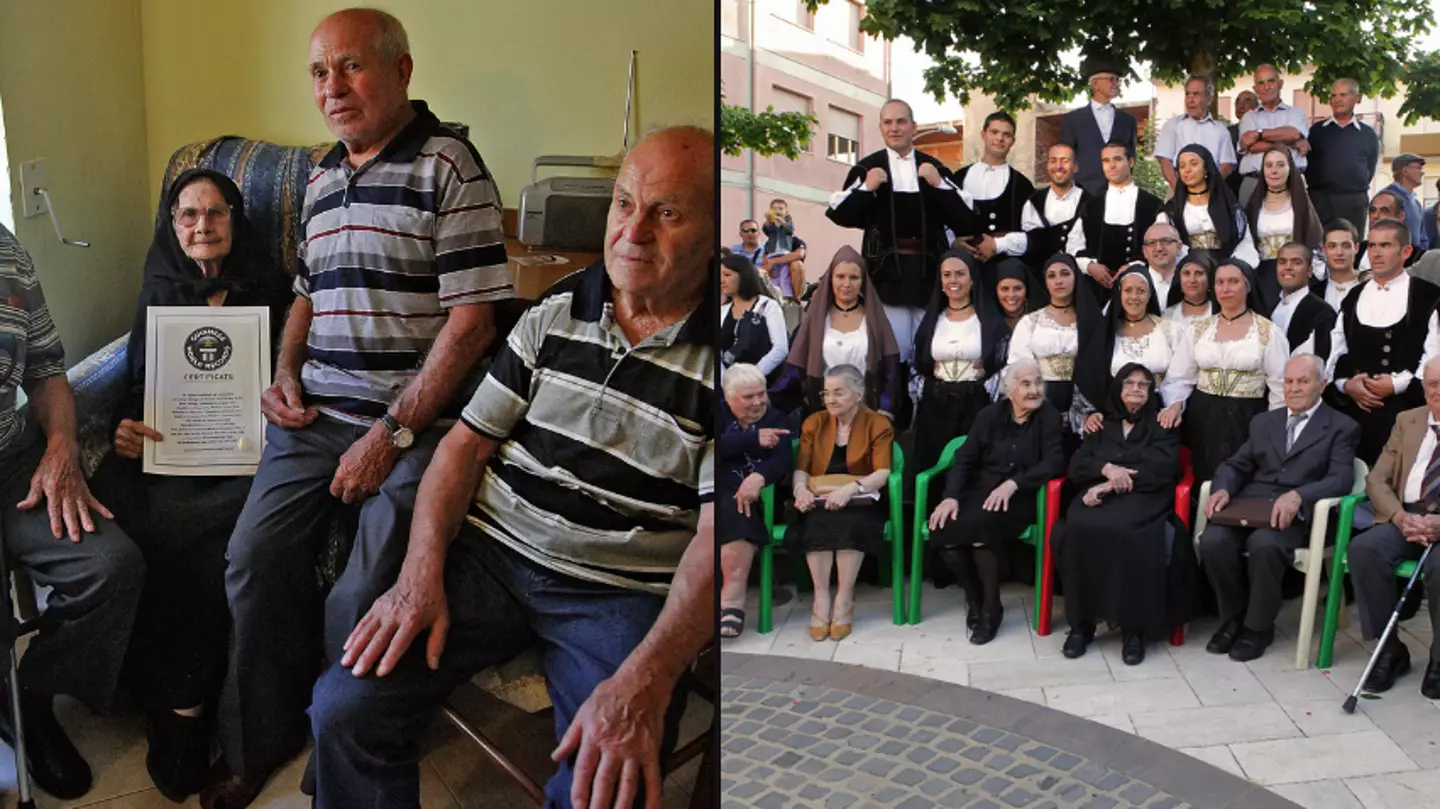
We all want to live a long and happy life so maybe we should take note of what the oldest family is the world did to outsmart father time.
Say hello to Italy’s Melis family.
The siblings knew what they’re talking about when it comes to eating the right thing, with all nine of them having a combined age of 861 years back in 2012.
They were given a Guinness World Record title for the highest combined age for nine living siblings, wit the oldest enjoying a long 109 years.
And one secret to their longevity? The same lunch every single day.
It might sound boring, as who doesn’t love switching up a tuna sandwich for a jacket potato?
But the family swore by it and have the backing of experts when it comes to the science behind the food.
In 2023 the Melis siblings featured on Netflix documentary series Live to 100: Secrets of the Blue Zones.
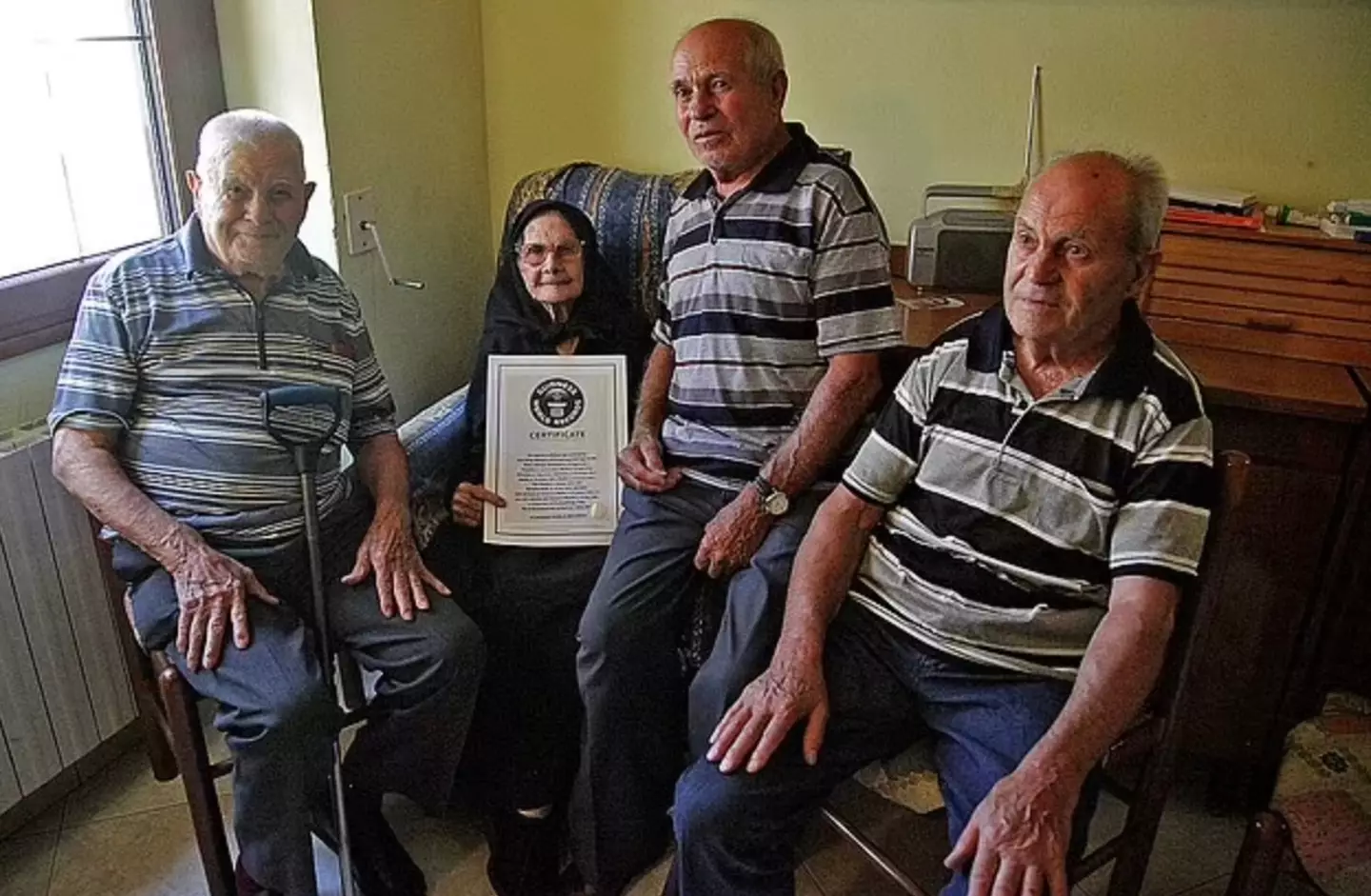
AFP/Getty
The show saw American author Dan Buettner visit five ‘blue zone’ areas of the world which included Sardinia in Italy, where the Melis’ lived.
A blue zone is an area of the world where people are claimed to live longer than on average.
And Buettner, an expert in tips to extend your life through healthy means, shone a light o the Melis family lunch that they ate every day.
The key to it? It is plant-based and contains foods full of goodies.

Westend61/Getty
Explaining the meal, Buettner said: “Every day of their life they had the same meal for their lunch.
“A sourdough bread, a three bean minestrone soup – a chunky minestrone with garden vegetables.
“It always had three beans; a garbanzo, a pinto and a white bean.
“And then they had a small glass of red wine. I’m talking a two to three ounce glass.
“Now this wasn’t because ‘my diet requires me to do it’.
“No, they loved it.”
Samanatha Cassetty, a New York City dietitian, told Today.com: “People who live the longest, healthiest lives tend to eat half a cup to a cup of beans daily.
“It’s also noteworthy that the soup uses three types of beans and multiple vegetables.
“Research suggests that eating 30 unique plant foods per week can improve your gut diversity, a marker of a healthy gut.
“Your gut regulates health functions, like blood pressure and cholesterol, inflammation, mood, weight and nutrient absorption, so you’ll be more likely to live a longer and healthier life if you have a healthy gut.”
What exactly is it in the Melis soup that’s so good for you? Well, pinto beans are packed full of nutrients, protein and fibre with zero cholesterol to be seen. Garbanzo beans are the same.
And white beans have a low calorie count against a huge nutrient backing. Again, protein and fibre is packed in so you’re left feeing full despite keeping calories to a minimum.
Featured Image Credit: ETTORE LOI/AFP/GettyImages
Topics: Food And Drink, Vegan, Netflix, Health, TV and Film

A food storage expert has warned Brits about the dangers of eating leftovers which aren’t stored correctly.
There’s nothing more frustrating than getting home after a long day of work and realising you need to spend another 20 to 40 minutes stood in the kitchen preparing something to eat.
It is for this exact reason (maybe) that batch cooking was invented, to save the global workforce’s sanity on a dreary Tuesday night.
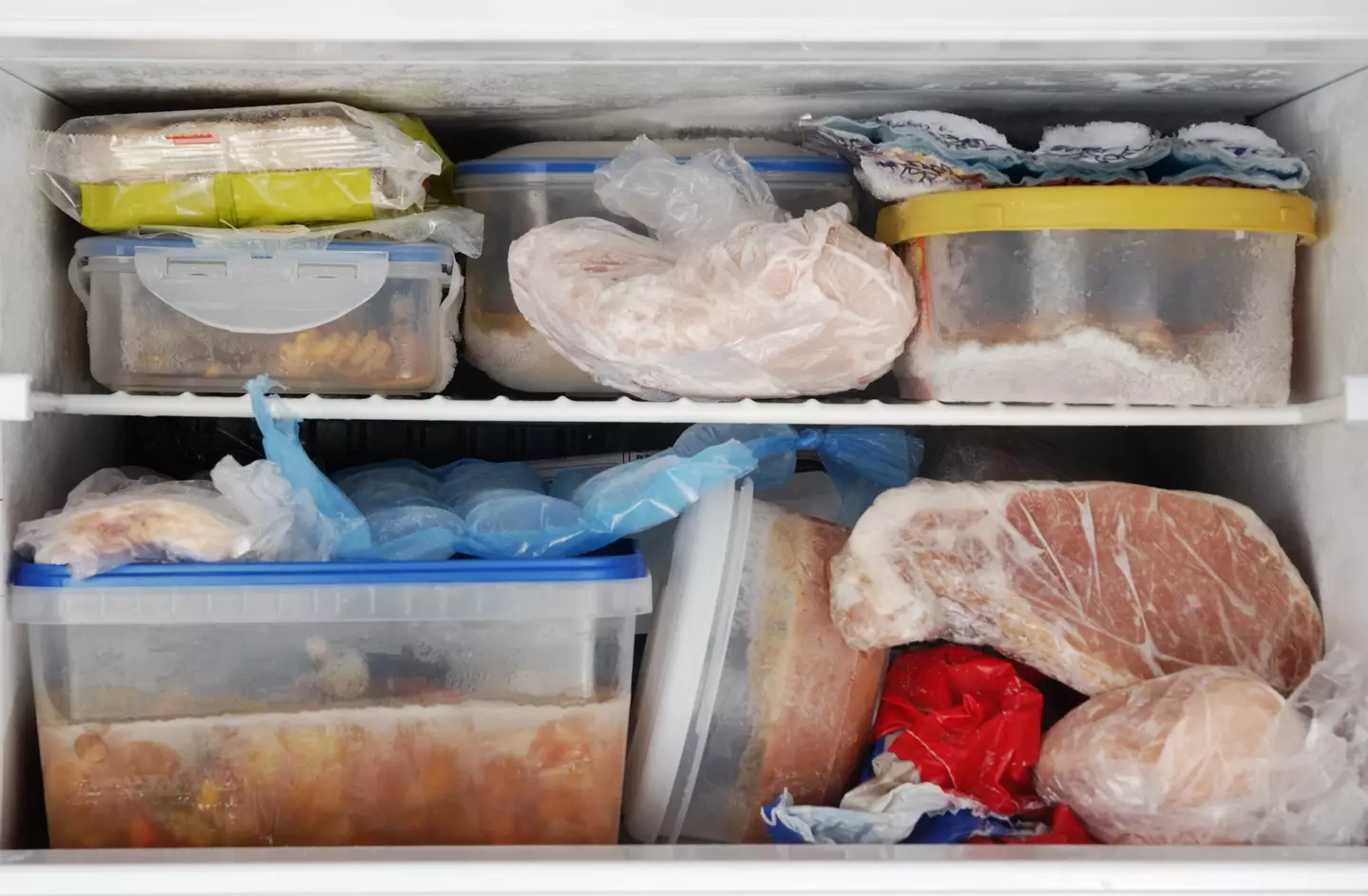
Having leftovers can make cooking a whole lot easier (Getty Stock Images)
But every positive in this world needs to have a downside, with convenience cooking having a pretty nasty consequence if you don’t store your leftovers correctly.
In fact, sometimes the effects can prove fatal after one family suffered a painful death from eating one-year-old defrosted noodles.
What are the dangers of eating leftovers which haven’t been stored correctly?
Coming as a surprise to no one, pushing your luck when it comes to leftovers could see you come down with some pretty nasty food poisoning – and in extreme cases even death.
Thankfully, contracting life-threatening toxins such as Bacillus cereus or Bongkrekic acid from your food are pretty rare, however we’d imagine that you’d also want to avoid the pretty grim symptoms of food poisoning such as vomiting, stomach cramps and diarrhoea as well.

However improper food storage can lead to you getting very ill (Getty Stock Images)
How to safely store leftover food
When it comes to safely storing leftovers, Joshua Houston, Food Storage Expert at Household Quotes recommends allowing the food to cool down to room temperature before storing in the fridge within a sealed container.
However, Houston warns against leaving your food out for longer than two hours as ‘bacteria can also grow quickly on foods that are left out at room temperature for too long’.
Now you may think it would be easier to shove any leftovers in the fridge straight away if you’re in a rush, however this can also be dangerous.
“You should always wait for food to cool down before refrigerating, as the hot food can increase the temperature of your fridge,” Houston explained. “This not only puts the leftover food at risk but also anything else that is already being stored.”
When it comes to how long you should keep leftover food before throwing it away, Houston recommends ‘three to four days after you first put them in the fridge’ before throwing the meal away.
Food stored in the freezer can last for ‘up to six months’ in a sealed container, with the food expert suggesting labelling any meals frozen in order to avoid eating a five-year old chilli.
Defrosting and reheating food correctly is also important, as this can also be a prime time for bacteria to multiply on food. Houston explains that you can use either a microwave, oven or air fryer to reheat food – as long as you make sure it reaches a temperature of 74°C.
Featured Image Credit: Getty Stock Images
Topics: Food And Drink, Community
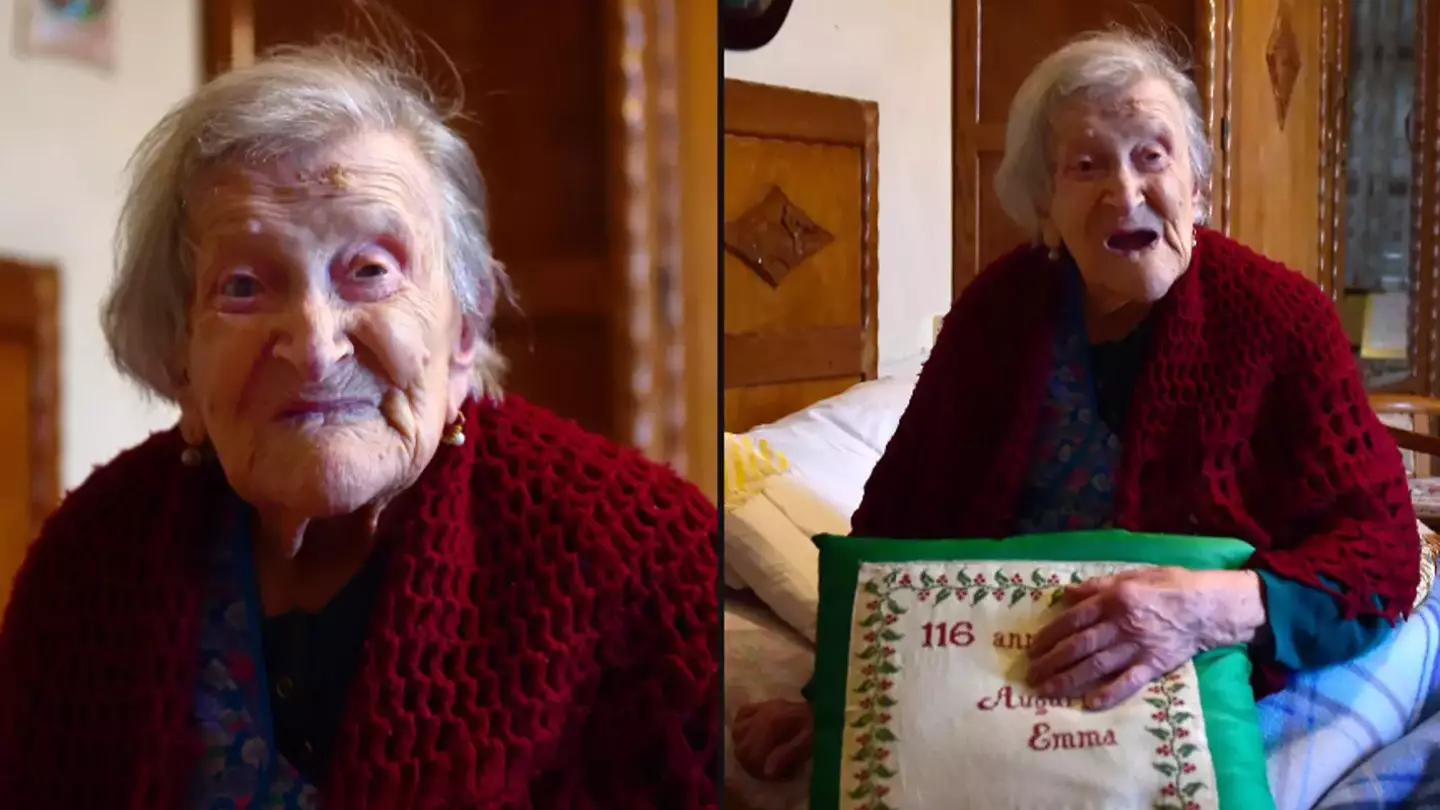
Here’s how the world’s oldest woman Emma Morano managed to make it to the ripe old age of 117.
Born on 29 November 1899 in Italy, Emma would live until 15 April 2017 and became the last living person to be born in the 1800s. As a supercentenarian, she also became the fourth-oldest European ever.
Thanks to advancements in technology and medicine, the average human lifespan is getting longer. However, 117 years is an extremely long time to live, with there being just 12 verified cases of people living to the same age.
So how did she do it? Turns out this was a question Emma was asked a great deal of times and anyone who has ambitions of becoming a supercentenarian should sit down and take notes.
It turns out that Emma had a relatively simple formula for living so long, follow a strict diet and steer clear of relationships with men.
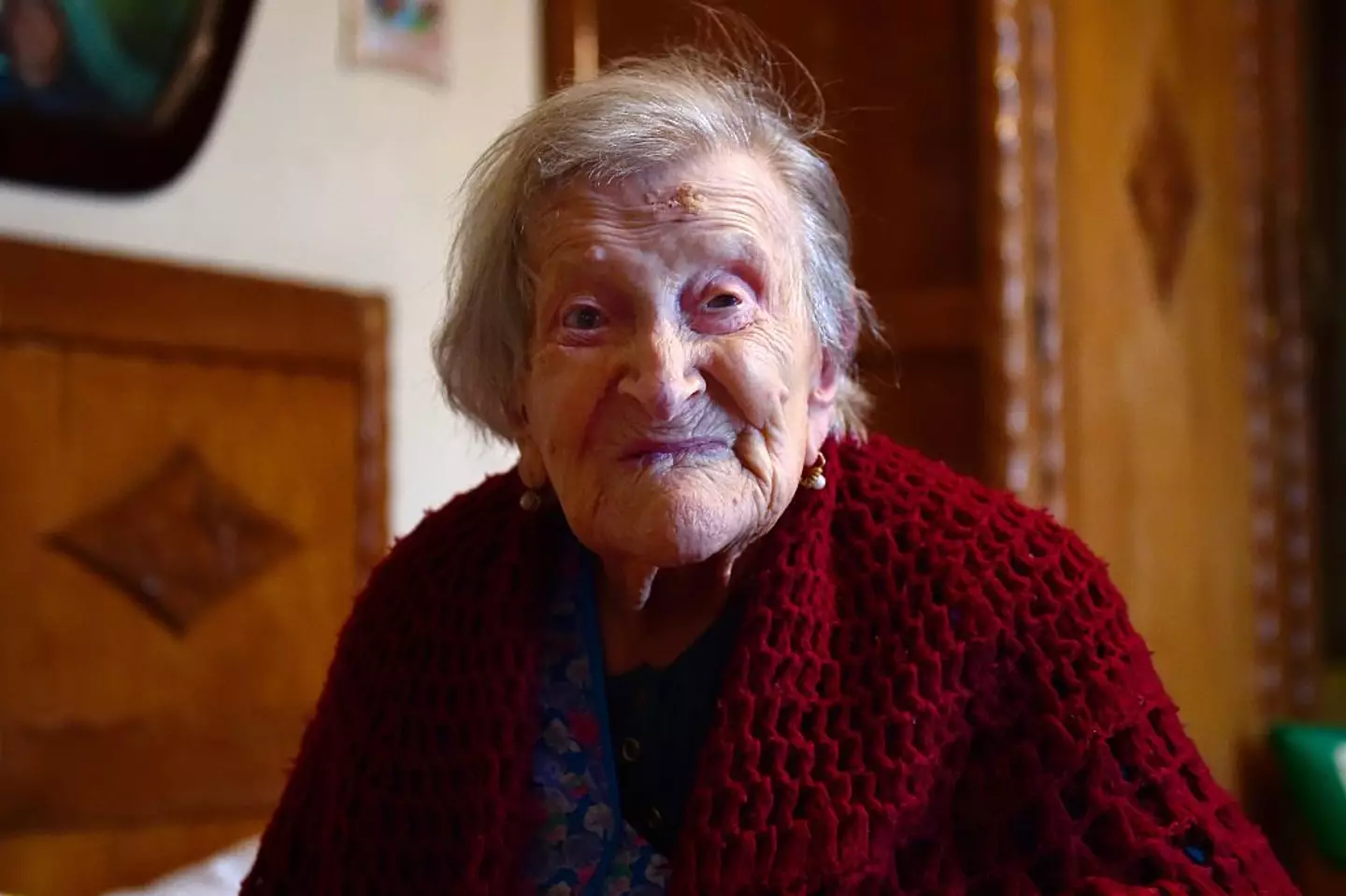
Emma overcame a lot in her long life. (OLIVIER MORIN/AFP via Getty Images)
The long life of Emma Morano
She overcame a lot of hardships in her lengthy life too – including an abusive marriage, the death of her only child, more than 90 different Italian governments and two World Wars.
The former factory worker believed that her decision to stay single after showing her spouse the door has a lot to do with how she made it to such a great age in life.
Emma explained the marriage had hardly ever been a match made in heaven – as she had actually been in love with a man who died during WWI and wasn’t too interested in finding anyone else.
She didn’t really have a say in the matter when the proposition of getting hitched was put before her, anyway.
In an interview with La Stampa newspaper in 2011, the world’s oldest person explained that a lad she knew from her neighbourhood and bluntly asked her the question on a random day.
She said: “He was someone from here, from the lake. I didn’t want to marry him, but he forced me. We lived in the same courtyard and one day he sent his mother to call me.
“I went there and he said to me, ‘If it suits you, you can marry me, if not I’ll kill you’. I was 26 years old. I got married.”
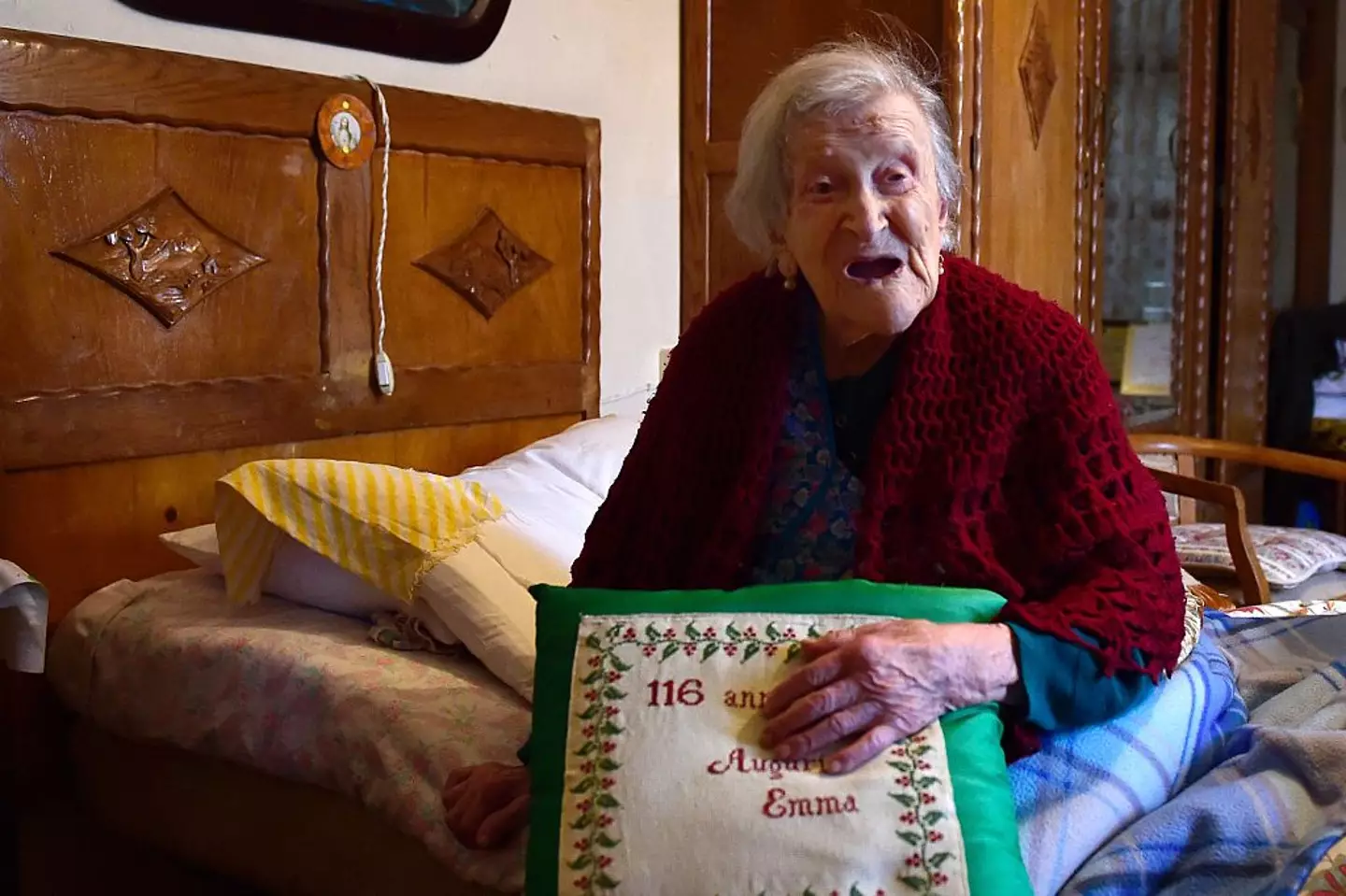
The Italian was the last person born in the 1800s to die. (OLIVIER MORIN/AFP via Getty Images)
Emma finally give the good-for-nothing bloke the boot in 1938, a year after her baby boy and only child passed away at just six months old.
The Italian never married again as she ‘didn’t want to be dominated by anyone’.
Emma worked until she was 75 and was ‘happy with the life’ she had led – especially as she wasn’t on any medication and was still pretty active during her retirement years.
Despite some of the chaos that erupted in her lifetime, she always remained consistent, thought positively about the future and never strayed from her daily diet, which she credits to keeping her in such good shape.
So, what did the world’s oldest person swear by eating everyday?
Eggs. Oh, and supping on a traditional Italian alcoholic beverage, grappa.
She revealed that she ate three eggs – two raw – each day for more than 90 years, a habit she had begun after being diagnosed with anaemia in the wake of WWI.
Emma previously bragged: “I eat three eggs a day and to digest I drink the grappa that I prepare myself: I put it in a jar with seven sage leaves, a bunch of rue grass and some grapes. Then I drink it with a spoon.”
She also admitted her genetics might have something to do with reaching 117, as her mother reached 91 and a few of her sisters had reached their 100th birthdays.
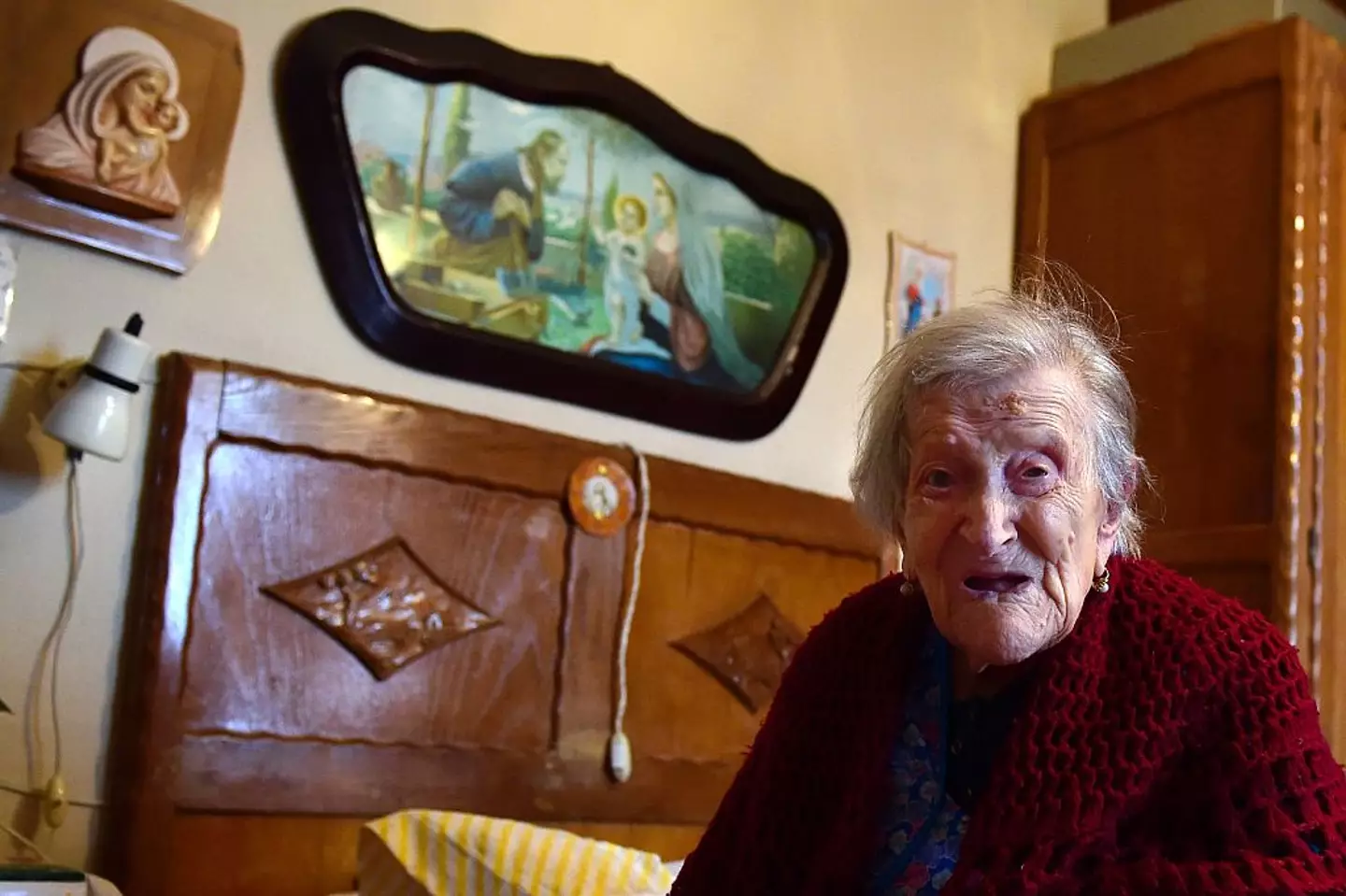
The 117 put her longevity down to two things… and genetics. (OLIVIER MORIN/AFP via Getty Images)
In the lead up to her death seven years ago, Emma had cut down to just two eggs a day and a few biscuits, but was doing well having just enlisted the help of a full-time carer just a couple of years previously.
Her doctor of nearly three decades, Carlo Bava, told AFP that his star patient rarely ate vegetables or fruit.
“When I met her, she ate three eggs per day, two raw in the morning and then an omelette at noon, and chicken at dinner,” he said.
They don’t say ‘you can’t teach your grandmother to suck eggs’ for nothing.
Featured Image Credit: OLIVIER MORIN/AFP/Getty Image
Topics: World News, Food And Drink

Here is the horrifying case of an a family who all suffered a horrific and painful death just hours after eating the same meal for breakfast.
Batch-cooking and freezing meals is a game-changer. You can enjoy the benefits of a home-cooked meal with the convenience of not having to make it from scratch after a long day at work.
However, this method can also lead to serious health issues should you not take the appropriate care when storing and reheating certain food items.

Eating reheated frozen food led to one family in China dying days later in hospital (Getty Stock Images)
For one family in China, the decision to start their morning by tucking into a homemade dish named Suantangzi, a type of thick noodle made with fermented corn flour, had deadly consequences.
On the morning of 5 October, 2020, the family of 12 gathered together and ate the meal to mark a national holiday.
The noodles had been defrosted and prepared after spending a year in the freezer, with only nine out of the 12 people there choosing to eat the dish. It’s understood the younger members of the family had decided against eating it, due to the taste.
In the following hours, all of the family members who had eaten the noodles began to feel extremely unwell, exhibiting symptoms of nausea, vomiting, and abdominal pain.
They were admitted to hospital for treatment, but would all succumb to the mysterious illness within the following days.
Following the deaths, local authorities began to investigate what had made three quarters of the family members in attendance fall ill and pass away, with the fermented soup seemingly the most probable cause.
During the process of being frozen and defrosted, the noodles had spoiled, causing a high concentration of deadly bongkrekic acid to develop. A high concentration of bongkrekic acid had been detected in both the noodles and the gastric fluid examined by doctors.
What is bongkrekic acid, and how does it develop?
Bongkrekic acid is a deadly respiratory toxin which forms in certain fermented foods.
Produced by the bacterium burkholderia gladioli, the toxin is odourless and tasteless – meaning the family would have had no idea of how dangerous the food was while consuming it.
Bongkrekic acid is also heat stable, which means that cooking will not kill it, and attacks the body by targeting the organs such as the liver, kidneys, and brain.

The family experienced nausea, vomiting, and abdominal pain after eating the dish (Getty Stock Images)
Symptoms develop within a couple of hours of consuming contaminated food, which can cause fatalities in as little as 24 hours.
“Eating food contaminated with bongkrekic acid can result in poisoning for both humans and animals and even lead to death, with death rates as high as 40 to 100 percent,” a report from China Daily explained at the time.


